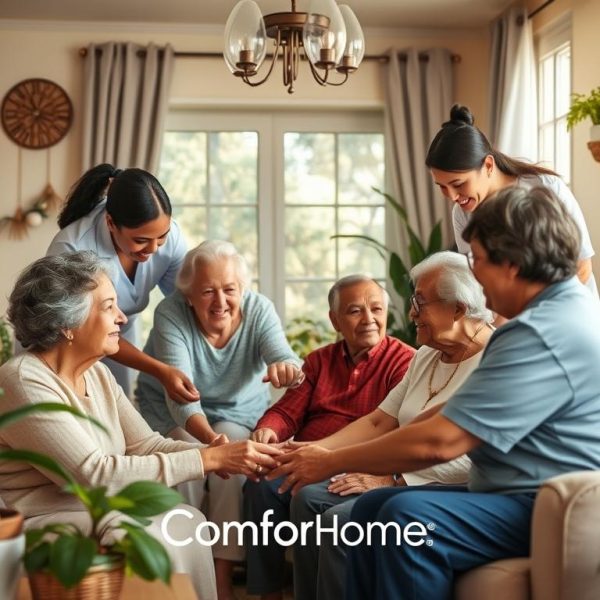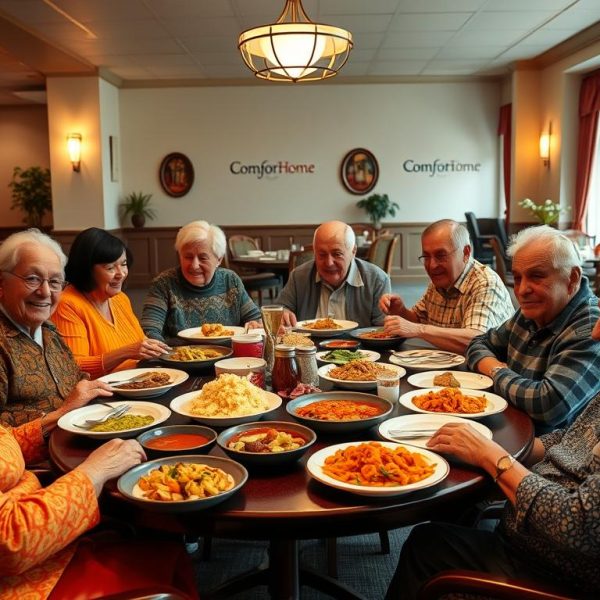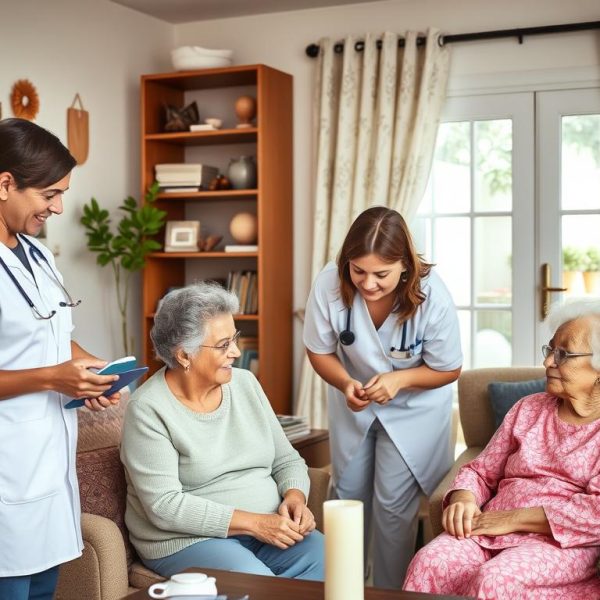When Susan’s father, Robert, turned 80, the family faced a tough decision. He was adamant about staying in his own home—a place filled with cherished memories, familiar surroundings, and a sense of independence. But Susan was worried. Robert’s mobility was becoming an issue, and his occasional forgetfulness had led to small accidents, like leaving the stove on or misplacing his medication. Susan didn’t want to take him away from his home, but she needed to ensure his safety. Fortunately, there was a solution: home safety monitoring technology. In recent years, the rapid evolution of smart home technology has provided new ways to ensure that elderly individuals like Robert can live independently, without compromising safety. With a range of innovative tools available, families like Susan’s are finding peace of mind knowing their loved ones are secure, even when they can’t be there in person.
In this blog, we’ll explore the different safety monitoring technologies that families in Ontario can use at home to protect their aging loved ones, highlighting how these systems help enhance security, ensure well-being, and preserve independence.
1. Motion Sensors: Detecting Falls and Unusual Activity
One of Susan’s main concerns was Robert’s mobility. He had already experienced a few close calls, tripping over furniture and once losing his balance in the bathroom. She wanted to find a way to be notified immediately if something happened.
Motion sensors were the answer. These small, easy-to-install devices could be placed in key areas around Robert’s home, including hallways, the kitchen, and the bathroom. If the sensors detected unusual activity, such as Robert not moving for an extended period, an alert would be sent to Susan’s phone. She could then check in on him, either by calling or stopping by to ensure everything was alright.
Many motion sensors can be customized to suit specific needs. For example, they can be set to detect movement at certain times of day, like during the night, when the risk of falls tends to be higher. If Robert got out of bed at 2 a.m. and didn’t return within a reasonable time, the sensor would alert Susan, allowing her to intervene before something went wrong.
Additionally, these systems offer data insights. Over time, the sensors can track patterns of movement, which helps caregivers understand their loved ones’ daily routines and detect any changes that might indicate declining health.
2. Smart Wearables: Personalized Monitoring on the Go
Susan knew that despite her best efforts, there would be times when Robert would be out and about on his own. Whether it was walking to the park or heading to the store, she needed to ensure he was safe wherever he went. Enter smart wearables.
Robert was fitted with a smartwatch, a sleek device that provided more than just the time. It tracked his location via GPS, monitored his heart rate, and came equipped with a fall detection feature. If Robert fell while out for a walk, the watch would automatically detect the fall and ask him if he was alright. If he didn’t respond, the watch would immediately send an alert to Susan and emergency services, pinpointing his exact location.
This wearable device also acted as a communication tool. With just the push of a button, Robert could call for help if he felt unwell or lost. For Susan, the real-time monitoring provided an invaluable safety net, allowing her to keep tabs on her father’s well-being without infringing on his independence.
3. Smart Home Hubs and Voice Assistants: Empowering Seniors
Robert had always been tech-savvy, and Susan decided to leverage that by installing a smart home hub with a voice assistant like Amazon Alexa or Google Assistant. This small but powerful device offered a wide range of safety features, enabling Robert to maintain control over his home environment while staying safe.
With voice commands, Robert could:
- Control the lights: If he got up in the middle of the night, he could ask the voice assistant to turn on the lights, reducing the risk of stumbling in the dark.
- Lock doors: If Susan was worried about security, Robert could lock all the doors by simply saying, “Alexa, lock the doors.”
- Set reminders: Susan set up daily reminders for Robert to take his medication. He could also ask the assistant to remind him about appointments or meals.
- Emergency calling: If Robert ever needed immediate assistance and couldn’t reach his phone, he could ask the assistant to call Susan or emergency services.
Smart home hubs can also be integrated with smart doorbells and security cameras, so Robert could see who was at the door without having to get up. For seniors with mobility challenges, this was an especially helpful feature, making their home more accessible while maintaining security.
4. Medical Alert Systems: Fast Response at the Push of a Button
While smartwatches offer a host of features, some seniors may prefer the simplicity of medical alert systems. These devices are specifically designed for quick and easy emergency communication, often in the form of pendants or wristbands with a single button.
For Robert, who sometimes felt overwhelmed by too much technology, a medical alert system was a more intuitive option. If he ever found himself in trouble—whether it was a fall, a sudden illness, or feeling lost—he could press the button, and the system would immediately connect him to a call center that could dispatch help.
Many medical alert systems also have fall detection capabilities built in, which means even if Robert couldn’t press the button himself, the system would automatically detect the fall and send help. These devices provide essential support for seniors living independently, ensuring that assistance is just a button press away.
5. Smart Door and Window Sensors: Preventing Wandering
One of the biggest concerns for families of seniors with dementia or Alzheimer’s is wandering. Robert didn’t have dementia, but he had a close friend, Helen, who had started showing signs of memory loss. Helen’s family had installed smart door and window sensors in her home, which alerted them whenever she tried to leave unexpectedly.
These sensors are connected to a smart home system, sending real-time alerts to a caregiver’s phone if a door or window is opened at odd hours. This was especially useful at night, when the risk of wandering was higher. If Helen attempted to leave the house at 3 a.m., her family would immediately be notified, and they could take steps to bring her back safely.
For families with loved ones who are at risk of wandering, these smart sensors provide a critical layer of protection, ensuring they are alerted before something goes wrong.
6. Cameras and Two-Way Communication Devices: Visual Peace of Mind
For Susan, it wasn’t always possible to check on Robert in person. That’s why she installed indoor cameras equipped with two-way communication in key areas of his home, such as the living room and kitchen.
With these cameras, Susan could see what was going on in real-time, even when she wasn’t there. More importantly, the cameras allowed for two-way communication. If Susan noticed that Robert had been sitting for too long or looked like he might need help, she could simply talk to him through the camera. This feature was particularly useful when she wanted to check in without making him feel like he was being constantly monitored.
The cameras also gave Susan peace of mind when she was at work, knowing she could visually check on her father whenever needed. For families living farther apart, these devices can be a crucial connection tool, allowing for daily check-ins with visual confirmation that everything is alright.
Conclusion: The Future of Safety Monitoring at Home
Susan’s experience with her father, Robert, highlights the growing importance of safety monitoring technology in enabling seniors to live independently. With the help of motion sensors, smart wearables, voice assistants, and other innovations, families in Ontario can ensure their elderly loved ones are safe, even when they can’t be there physically.
As technology continues to evolve, we can expect even more advanced solutions tailored to seniors’ needs—systems that prioritize both safety and independence. For Susan, the integration of these tools into Robert’s home allowed her to give him the gift of independence while keeping him safe, secure, and connected to the people who love him most.
Tech-forward living is no longer a luxury—it’s a necessity for families who want the best for their aging loved ones. By investing in the right technology, you can create a home environment that offers peace of mind, knowing that help is always just a step, a call, or a sensor away.








